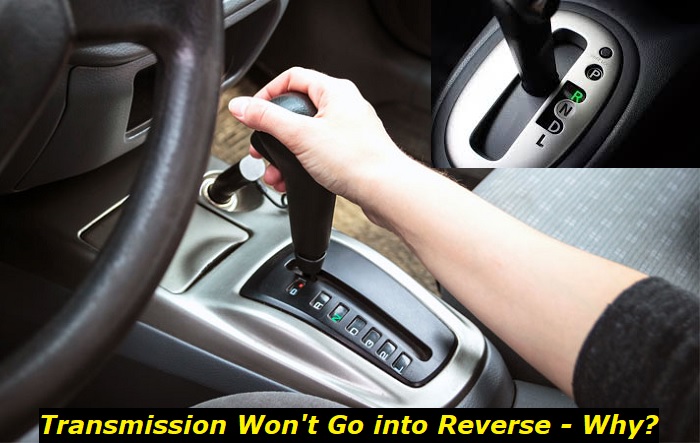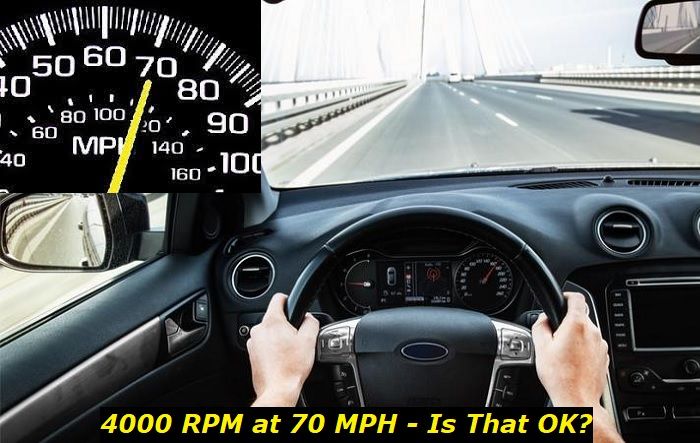The inability to switch to reverse means that the entire automatic transmission needs proper inspection and expensive repair. Only in some cases, the problem may be in the TCM, shifter, or some other unit that is easier to check and replace or repair than the transmission.
Transmission no-shift problem highlights
- Level of importance:High
- Reasons:Control module failure, low fluid,badfluid, mechanical issues
- Needed expertise:High
- Needed tools:Professional tools set
- Time taken:5-10 hours
- Can you drive? Yes, if some gears engage
- Possible issues: Fatal transmission damage, car stationary.

What are the common reasons for reverse gear problems?
Fixing the reverse gear in the automatic transmission should start with proper diagnosing. You need to understand which unit is in charge of the problem. Without this, you may invest literally thousands in your vehicle and eventually get nothing but a malfunctioning transmission with the same symptoms or even worse.
I've spoken to several transmission mechanics and they all agree that the following are the most common reasons why your transmission may not go into reverse:
- the low level of the transmission fluid - one of the most common and easy-to-fix reasons, I should say;
- the fluid is contaminated and can't flow freely through the solenoids and other parts of the transmission;
- the filter is contaminated and doesn't allow the pump to create the needed pressure to shift to reverse;
- the pump is broken and can only create the pressure that's enough for engaging forward gears;
- one of the solenoids is broken, so only a certain set of gears can be activated;
- the TCM is malfunctioning and the transmission just doesn't get the command to go to reverse;
- the shifter is broken and doesn't send the signal to the TCM or ECU to tell them to shift to reverse.
Of course, these are not all the problems that can happen. Among less common issues I can think of transmission mount problems and dispositioned transmission, wrong fluid with improper viscosity, broken reverse gear, or other mechanical damage in the transmission itself.
Unfortunately, it's quite hard to understand what exactly is going on with the automatic transmission without proper diagnostics. The best way to see the actual reason for this problem is to go to a good mechanic who has experience working with your type of transmission.
What are the symptoms? Register them!
Before you go to the repair shop, you better register all the symptoms and tell them to your mechanic. This will most likely reduce the possible range of problems and the mechanic will be able to locate the problem easier and faster (so, the labor will be cheaper).
Here are some symptoms you can register:
- the transmission doesn't go in reverse under any circumstances, there are no kicks or punches, just nothing;
- the shifter doesn't go in the reverse position - here, the problem is more likely with the shifter itself;
- you can still go in reverse after several tries - also pay attention to the shifting system;
- the car stalls when you try to shift to reverse;
- the transmission shudders and/or makes some noises when the shifter is in R but it still doesn't go to reverse.
You may also register other symptoms and circumstances under which you can or can't go to reverse and make your car do what you want it to do. Every tiny bit of information is precious and can eventually save you a hundred dollars you will otherwise pay for diagnostics.
So, now you know what to do the first moments after you notice the problem - register all the symptoms and write them down to let your mechanic know.
Can you repair the transmission by yourself when it doesn't go to reverse?
When it comes to transmission repair, you may find hundreds of tutorials online and some of them even seem pretty easy and fast to accomplish. But I'm sure those tutorials are written for the sake of the content - they won't help you actually take off the transmission, diagnose it and repair it if you don't have extensive experience as a car mechanic.
Automatic transmissions of any type are extremely complicated in terms of the technologies used in them, so even locating the problem will be extremely difficult. Given there are several possible reasons for the no-reverse problem, you will spend weeks digging into the transmission and trying to understand what is wrong with it.
So, no, I don't recommend any DIY repairs, and here's what may go wrong:
- it's not that hard to damage a modern transmission if taking it off without a proper understanding of how it should be done;
- to locate the problem, you will anyway need to ask for professional help;
- also, you may overlook some other problems that should be repaired right now to prevent the transmission from failing in the nearest future;
- finding proper parts for repair may also be challenging - even understanding the model of the transmission may be a challenge for you;
- there is a slight chance only that you will assemble the transmission properly and will install it without problems and mistakes;
- even the smallest mistakes in the process can lead to serious problems in the end.
In many good repair shops, there is a special person who is in charge of transmission repairs. This person only works with transmissions and usually has years of relevant experience. So, you shouldn't think you can do the job with the same result as this person.
DIY repairs usually cover much less complicated units and parts. But the transmission should be repaired exclusively by a person who understands something about these units and can guarantee the high quality of their work.
Why do transmissions fail and don't go to reverse?
Now, the important question is how to prevent your automatic transmission from having problems with the reverse gear. Actually, in most cases, this problem comes because of the high age of the transmission and the need for repair.
On average, automatic transmissions can live about 150,000 miles or even less. When it comes to dual-clutch type of transmissions or CVTs, their average age is 100,000 to 120,000 miles. If your transmission stopped going into reverse at this mileage, it means the unit needs a lot of attention and extensive repairs.
But there are also other reasons why you can't put the car into reverse. Watch out for these preconditions:
- Really aggressive driving. When you drive aggressively, it's very likely that your transmission is overheating. This will lead to all kinds of different failures including not going into reverse because of internal damages.
- Overheating transmission. Another issue that can cause the no-reverse problem in transmissions is overheating. This may be because of poor cooling, overloading, towing heavy trailers, crawling uphill for a long time, etc.
- The wrong type of fluid. Transmission fluid is really important and its quality should be acceptable for your vehicle. It's always better to buy OEM fluid to avoid issues with its properties and quality.
- Contaminated or old transmission fluid. Also, you should change the fluid regularly. Old fluid will not do its job properly and will lead to all kinds of different problems including no-reverse.
- Wrong operation. If you are using manual mode a lot or applying your paddle shifters, you may cause additional damage to your transmission. Learn how to use all these options with no damage to the transmission.
As you see, there are a lot of things you can do wrongly with your car and cause transmission damage. Unfortunately, even some simple transmission repair that still requires taking this unit off the car will cost you a lot. So you better keep in mind these reasons listed above and try to prolong the life of your transmission by avoiding these situations.
Final thoughts
I believe now you know much more about how automatic transmissions work and why they may not engage the reverse gear. You also know the preconditions that lead to this problem and now you can prevent these things from happening. Of course, you will not save your transmission from dying sooner or later, but you can potentially prolong its life.
If you have the no-reverse issue, start with checking the fluid level and contamination and then go on to diagnose the entire unit. You better find a good mechanic with a lot of experience. Their work costs a lot but they will find the problem quickly and offer the most reasonable solution.
About the authors
The CarAraC research team is composed of seasoned auto mechanics and automotive industry professionals, including individuals with advanced degrees and certifications in their field. Our team members boast prestigious credentials, reflecting their extensive knowledge and skills. These qualifications include: IMI: Institute of the Motor Industry, ASE-Certified Master Automobile Technicians; Coventry University, Graduate of MA in Automotive Journalism; Politecnico di Torino, Italy, MS Automotive Engineering; Ss. Cyril and Methodius University in Skopje, Mechanical University in Skopje; TOC Automotive College; DHA Suffa University, Department of Mechanical Engineering






Add comment